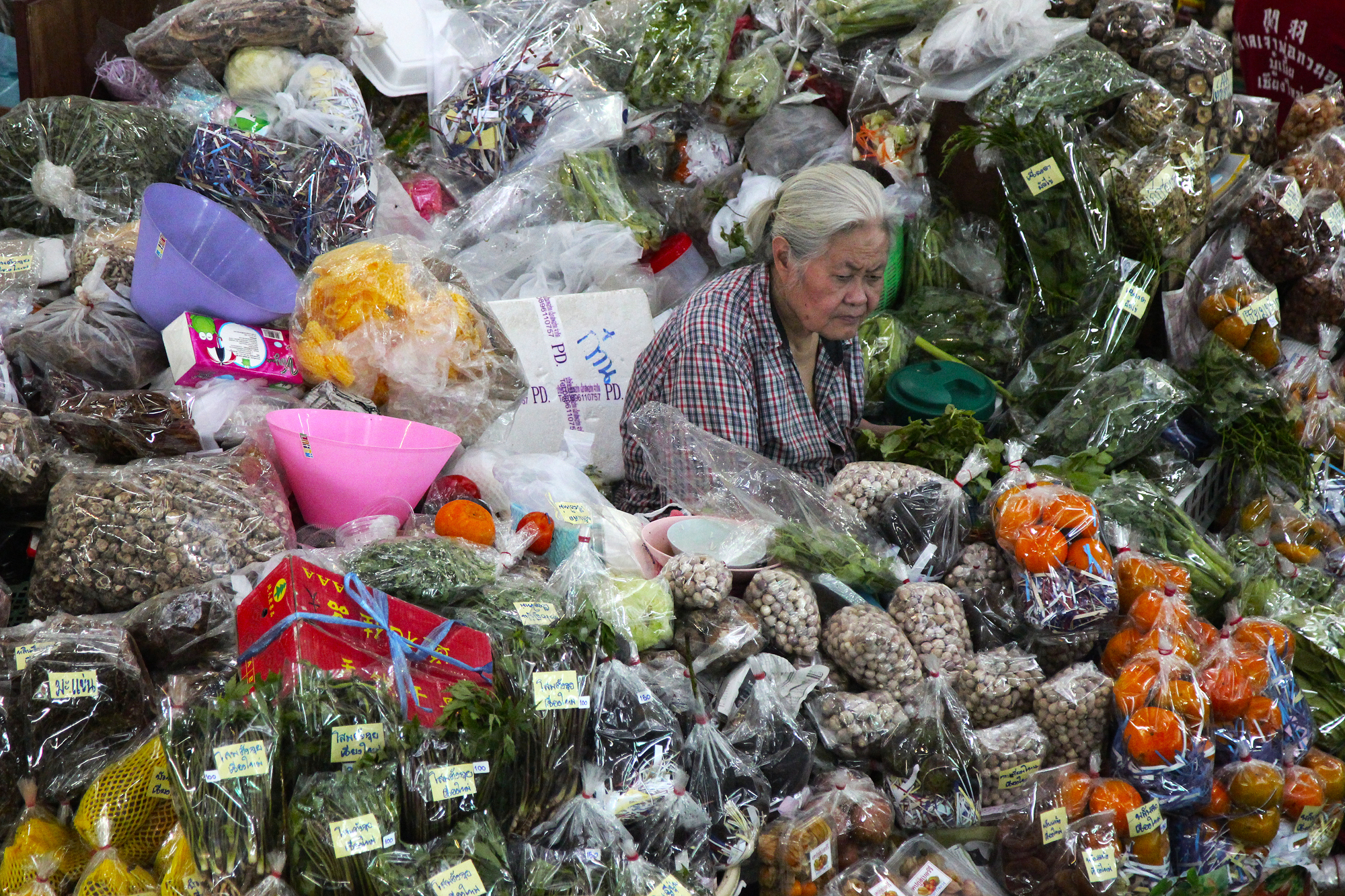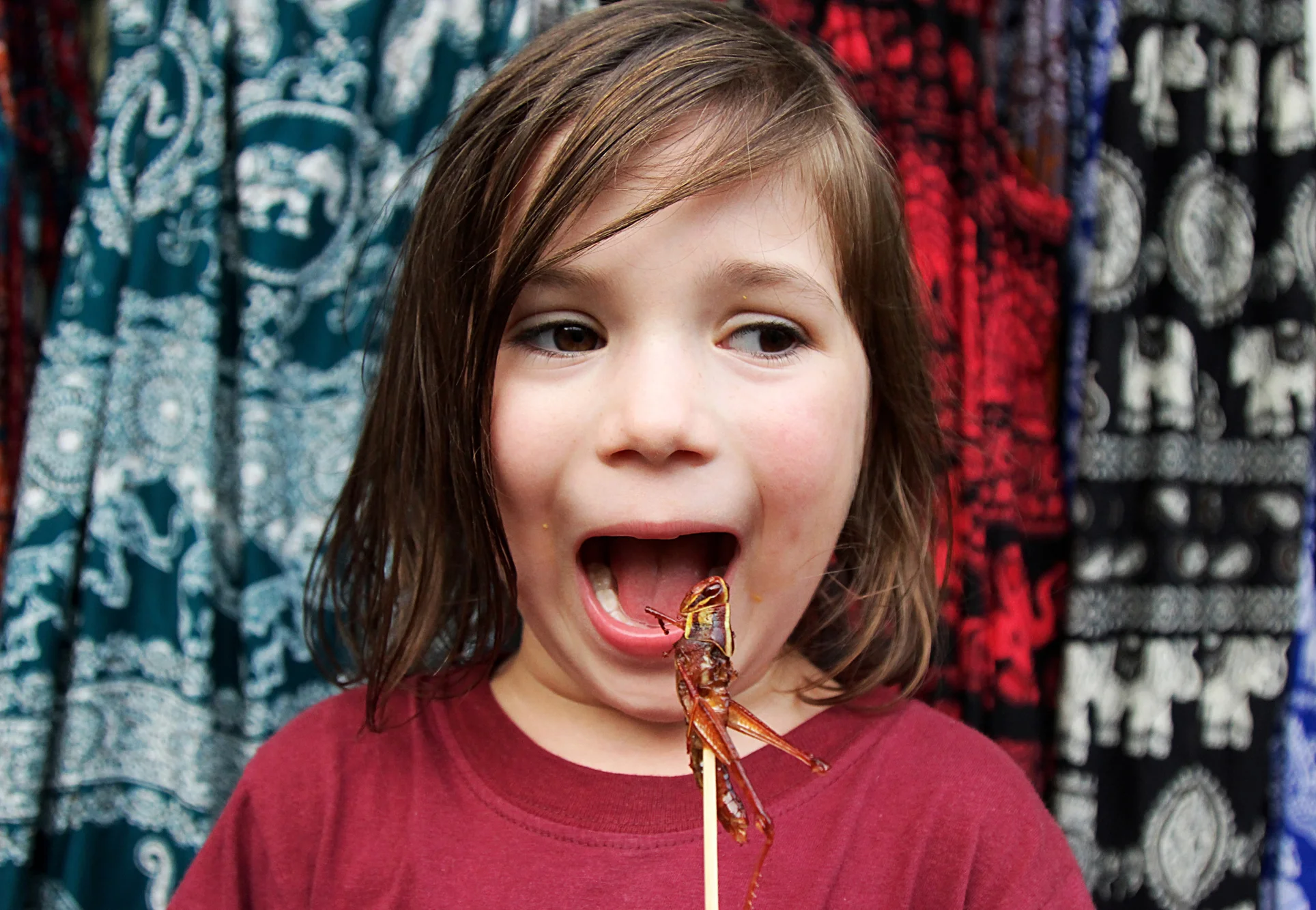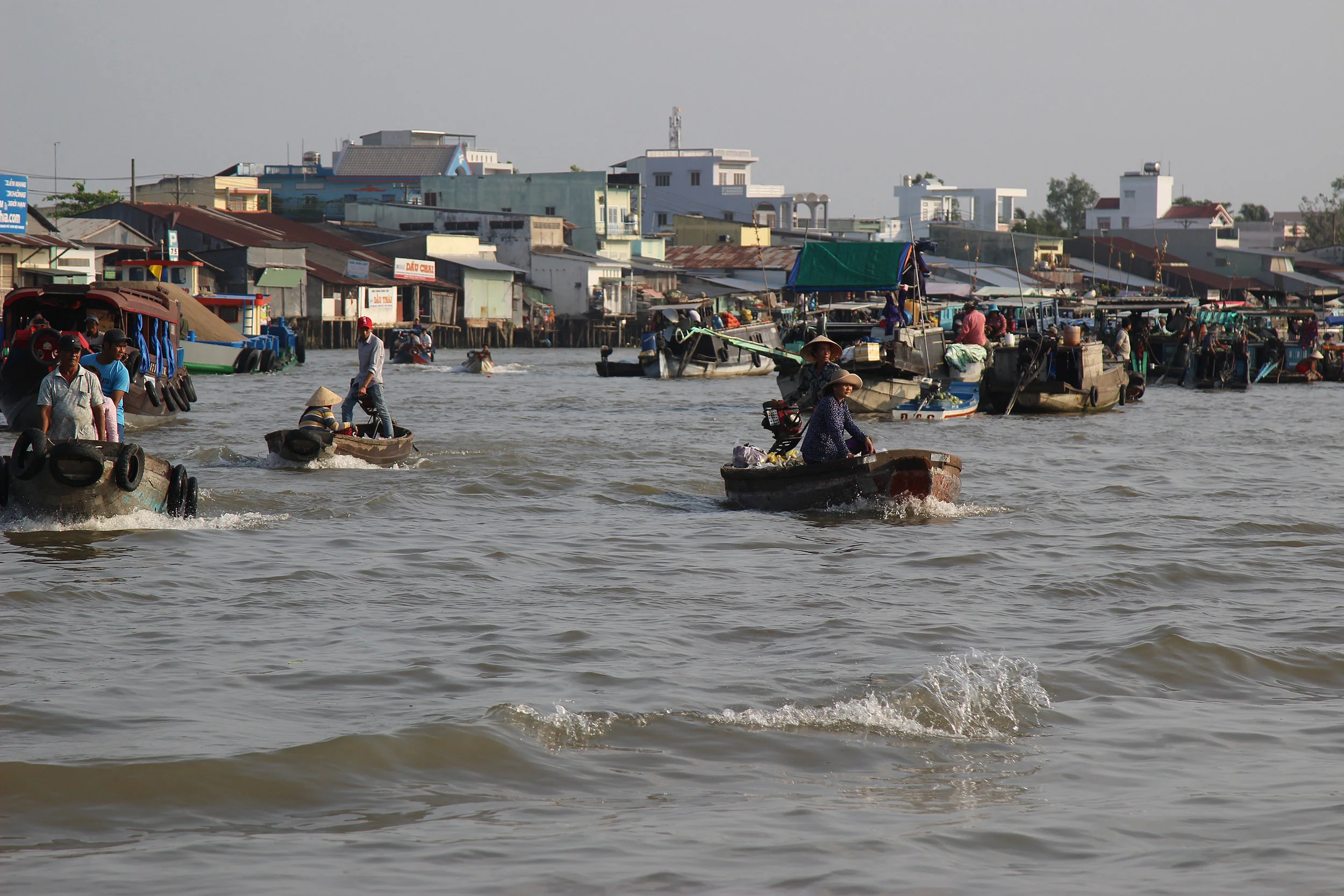Food. The new religion.

Ahead of us, in any given traffic jam, there is a monk on a motorbike, sitting side saddle in his flame and rust coloured robes. Temples pop up in ornate visions of gold and teal and disco glitter, as common here as the ubiquitous 7-11s. Every taxi driver has a yant or protective blessing daubed on the ceiling and a garland of amber flowers hanging from the rearview mirror. Welcome to Chiang Mai, where Buddhism officially rules the roost. But there's another religion in town. Constantly observed and passionately worshipped, we're talking, of course, about food.
A lot of people come to Chiang Mai just to eat. There are thousands of column inches and typed pixels on the subject. And rightly so, because Lanna -or Northern Thai- cuisine is a very different animal to its better known neighbours. This is not the spiritual home of pad Thai or green curry or the other things that plaster generic takeaway menus the world over. Those dishes are here, sure, but this is the homeland of deep spice, roasted chilli and uncomfortable bits of beast. A place where eating is continuous and interesting and continuously interesting.
In Thailand, after all, food is considered the national pastime. Not working? Have a bowl of noodles. Got ten minutes free? Eat some curry. Still peckish? Something light, a pork knuckle maybe. All over the country, people greet each other with "gin khao reuyang?", which literally translates to "have you eaten rice yet?" Hello is dispensed with, a question about food effortlessly taking precedence.
Nowhere is this more in evidence than Chiang Mai. But what we found most interesting about this city's approach is that there is no need for a fancy restaurant. We usually research a place and fantasise about our budget stretching to the posh places. But here, there is no hierarchy. Linen tablecloths and Michelin plaudits are not seen as any better than the local guy making dumplings on the nearest street corner.
The celebrity chef of Chiang Mai is not someone with a worldwide chain of restaurants or a TV show, but a woman with a single market stall, known by all as the Cowgirl. She may have only started wearing her signature stetson to stop the fluorescent stall light from half-blinding her with its brightness, but it has become her signature as much as the khao kha moo she serves to the adoring nightly queues at the Chang Phueak night market. To you or I, that dish means pork leg simmered low and slow in a mother broth that's essentially been cooking for years. It's served on a plastic plate and a bed of rice, that rich broth flooding through the pure white grains. You can add an egg, soft-boiled, peeled and quivering. Some pickled mustard greens to take the edge off the richness, maybe a spot of chilli sauce to perk it up. But that's it. It's all she makes. A meal for the four of us cost about three pounds. And it is unmissable.
Anyone can be head chef in Chiang Mai. Up the road from our apartment, there's a guy under an umbrella on the car-choked Hassadhisawee road, grilling whole fish on half an old oil barrel. We ate hammered meat washed down with sugarcane rum alongside a roaring highway at night. We've seen people drive by with entire kitchens attached to the side of their motorbikes.
One of the most memorable meals we had was a green papaya salad made by a little old lady in the temple grounds who pounded together the striking, pungent flavours in her ancient pestle and mortar, before pouring it into a cellophane bag and rubber band sealing it like a pro. Having eaten too much at the time, we stuck it in the bottom of the buggy and only remembered it when we got home and the kids were asleep. We ate it greedily in all its refreshing and chilli-spiked glory, straight from the bag, in terrorised darkness and reverential silence.
Then there are the places you can eat. The old city is enclosed by an ancient moat and great curving, crumbling walls which are illuminated after dusk and surrounded by fountains. Each side of the moat has a gate which plays host to a daily food market, a pop of bustling humanity against this theatrical backdrop. At the chaotic Sunday walking market, you can shop till you drop, then pull up a stool and eat your weight in lemongrass-studded sai ua or Chiang Mai sausage as a vast gold temple looms above you. In Think Park, an independent shopping and cultural centre set up by a Thai alumni of Central Saint Martins, the architects chose to save the great tree at the centre of the plot and build around it instead. At night now, the tree is strung with thousands of twinkling gold lights and street food stalls are set up below it. There are family living rooms converted into restaurants and forecourts that morph into markets. As long as it can fit a burner and some plastic stools, anywhere is up for grabs.
We know, all too painfully and from first-hand experience, that running a restaurant is rough. From day one, you are drowning in overheads and staff management and rent and customer service. So here, it was incredibly refreshing to see a new take on the restaurant. Not a hipsterish gimmick. But a joyful, gleeful, anything goes spontaneity that means you don't need a second mortgage or a double heart bypass to survive. You need a motorbike, a tuk tuk or a table on the street. A patch of pavement or a borrowed spot in a carpark. Really, all you need is an appetite. And, here at least, the hungry people will come.






















